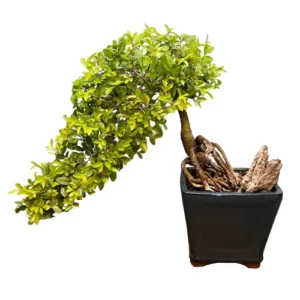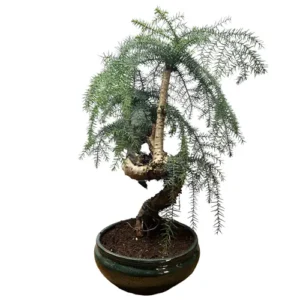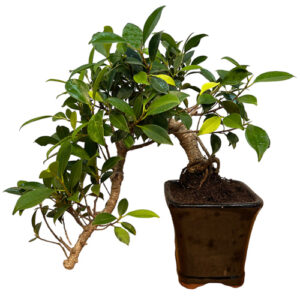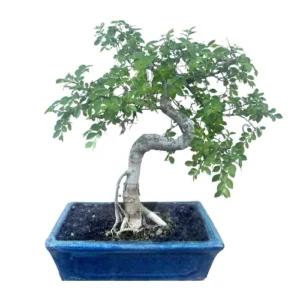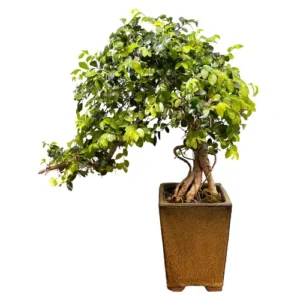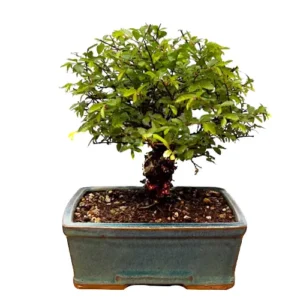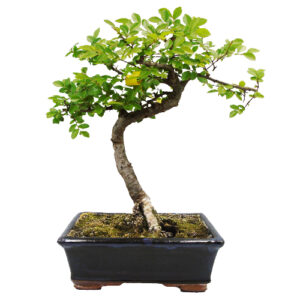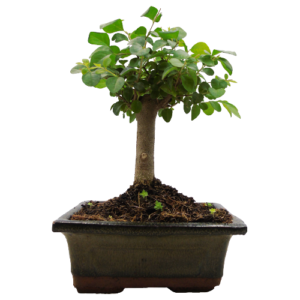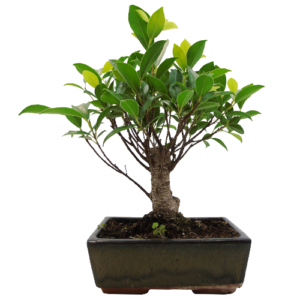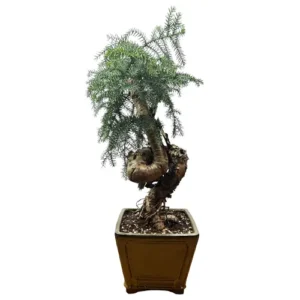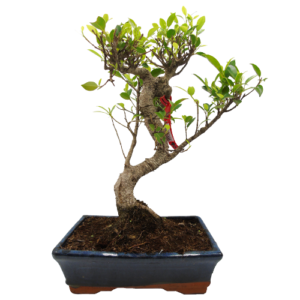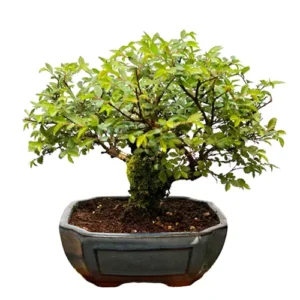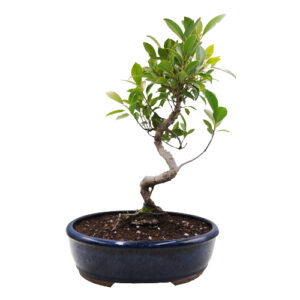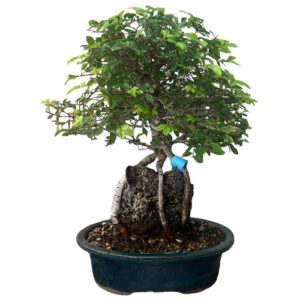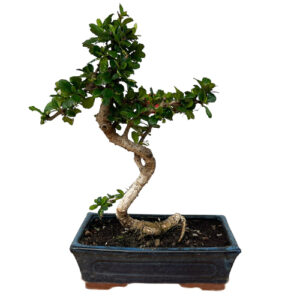Olea sylvestris
Olive Bonsai
While originating from the Mediterranean, these bonsai can be found growing in warm climates across the globe. Olive Bonsai have striking green-grey leaves and produce petite cream flowers. These flowers develop into olive fruit and its remarkably hard wood is used to make modern cutting tools.
Olive Bonsai Care Tips
Placement
Choose a location that can provide the full sun these species adore. An ideal location for an Olive bonsai is a warm one. At best it should be kept above 7 degrees Celsius. They can withstand temperate climates but will require protection, particularly from frost. When growing in the UK its worth considering this is a Mediterranean plant best kept indoors.
Watering
Every other day is the best watering regime throughout the summer. Being Mediterranean these species can withstand drought but regularity is best. During winter Olive Bonsai need watering weekly.
Feeding & Fertilising
It’s advised that Olive Bonsai are fed every fortnight across the summer. Using a low nitrogen content fertilizer in the mid to late summer is also ideal.
Pruning & Wiring
Olive Bonsai require attention across the growing season in terms of pinching back new shoots. A full prune is advised in late summer when fruits have formed and the tree has flowered.
Olive Bonsai are receptive to wiring at any time of the year as they don’t require as much wiring as the majority of bonsai species. We also recommend using wires with a thickness that matches the thickness of the branch: if the wire you choose is too thick you will damage the bark. If it is too thin, it won’t be effective.
Repotting
Repotting an Olive Bonsai should take place every other year and be done in the spring.
Trees that are ready for repotting will require root pruning, a suitable new pot and appropriate soil mix.
When repotting, do not cut back the root mass by a large amount, and choose a well-draining soil mix that has a neutral or slightly higher PH value of 5-6 but not over 7. We tend to use a mixture of different speciality bonsai soils on our trees. Every species is different so please contact us for free soil-mix advice or to take advantage of our repotting service.
Bonsai make for a one-of-a-kind indoor plant offering elegance, nature and art all in one minute form. Across an array of exquisite and erudite species, they all demand their own specific care and cultivation needs in order for their beauty to flourish. We have an extensive library of care guides for indoor bonsai trees so you can make an informed and considered choice. It’s not about selecting the perfect bonsai, it’s about selecting the perfect bonsai for you.
Olive Bonsai - Typical Queries
Do Olive bonsai get pests and diseases?
Olive Trees are not all that prone to attracting pests and diseases even in their bonsai form. However, if the plant is in warm conditions during the colder months mealy bugs and scale can appear. Changing the conditions and using appropriate pesticide is advisable.
How to propagate Olive bonsai?
Olive bonsai can be propagated from both cuttings and seeds. Air layering off a mature plant is also an option. Propagating with cuttings takes 25 degrees C temperatures and above. Seed propagation should take place in Spring.
Can you keep a Olive bonsai outdoors?
Even in temperate climates Olive bonsai can survive outdoors but they require some consistent care. Cold doesn’t particularly affect Olive for the worse but cold and wet can be a death knell. If deciding to grow your Olive bonsai outdoors an open-free draining soil mix is an absolute must. The cold may not be the biggest concern, but do protect your Olive bonsai from the wet. Overhead protection is a must from rains, be it a bench or a greenhouse or shed. Don’t forget ventilation.


